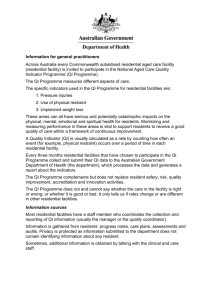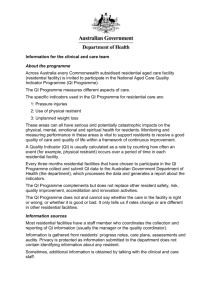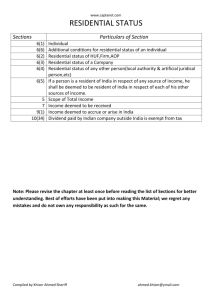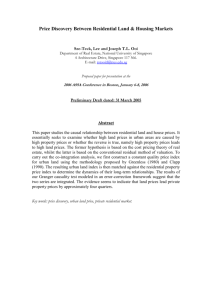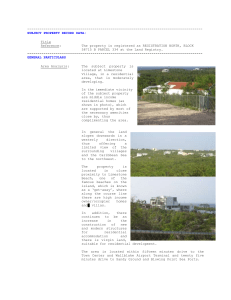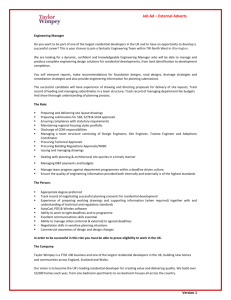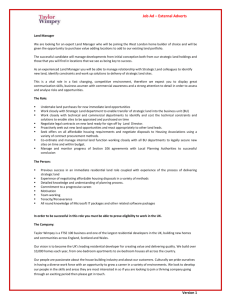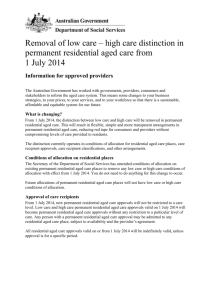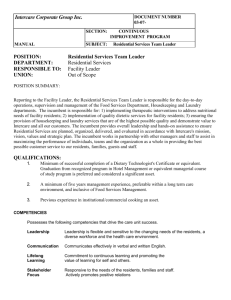Information for board directors and executives
advertisement
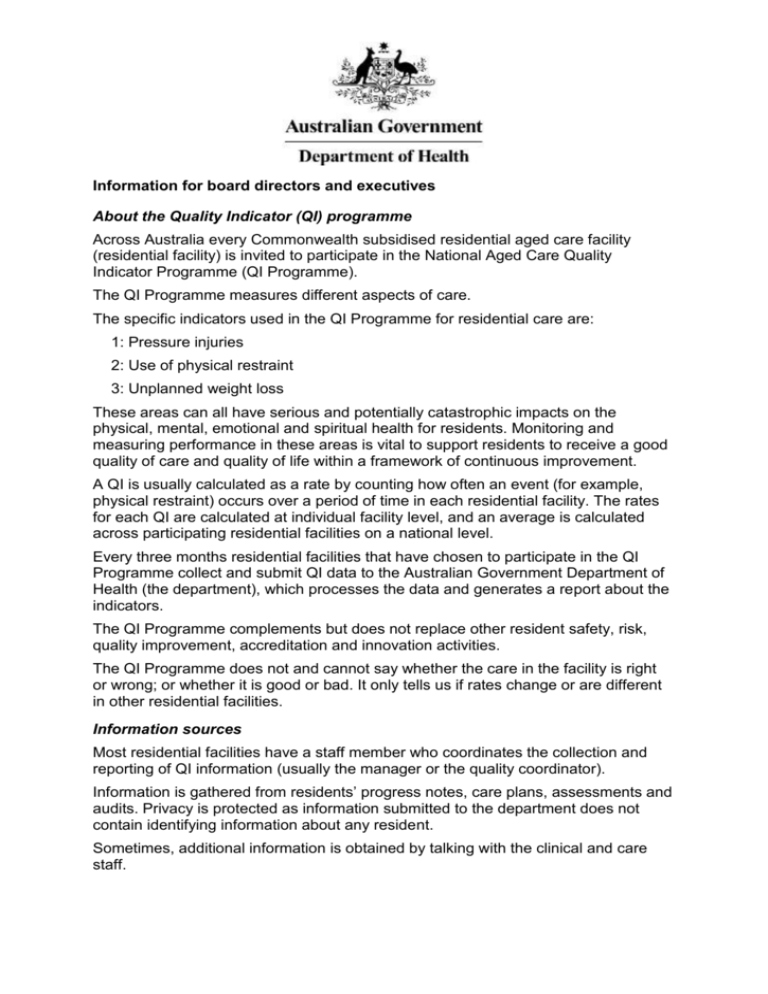
Information for board directors and executives About the Quality Indicator (QI) programme Across Australia every Commonwealth subsidised residential aged care facility (residential facility) is invited to participate in the National Aged Care Quality Indicator Programme (QI Programme). The QI Programme measures different aspects of care. The specific indicators used in the QI Programme for residential care are: 1: Pressure injuries 2: Use of physical restraint 3: Unplanned weight loss These areas can all have serious and potentially catastrophic impacts on the physical, mental, emotional and spiritual health for residents. Monitoring and measuring performance in these areas is vital to support residents to receive a good quality of care and quality of life within a framework of continuous improvement. A QI is usually calculated as a rate by counting how often an event (for example, physical restraint) occurs over a period of time in each residential facility. The rates for each QI are calculated at individual facility level, and an average is calculated across participating residential facilities on a national level. Every three months residential facilities that have chosen to participate in the QI Programme collect and submit QI data to the Australian Government Department of Health (the department), which processes the data and generates a report about the indicators. The QI Programme complements but does not replace other resident safety, risk, quality improvement, accreditation and innovation activities. The QI Programme does not and cannot say whether the care in the facility is right or wrong; or whether it is good or bad. It only tells us if rates change or are different in other residential facilities. Information sources Most residential facilities have a staff member who coordinates the collection and reporting of QI information (usually the manager or the quality coordinator). Information is gathered from residents’ progress notes, care plans, assessments and audits. Privacy is protected as information submitted to the department does not contain identifying information about any resident. Sometimes, additional information is obtained by talking with the clinical and care staff. The role of the board and executive The board and executive is responsible for the governance, leadership and oversight of safe, high quality resident care. This includes ensuring that organisational responses to the quality data are appropriate, so: Be familiar with the QIs, the QI Programme and any targets your facility may have set. Ensure your organisation is an active participant in the QI Programme. Ask to see a full series of the QI reports, and ask questions. Question whether the data collection systems and supports available to staff are sufficient to ensure accurate and reliable information is being reported and acted on. Ensure that targets are set to determine priorities for action along with realistic timelines for achieving the desired level of performance. Optimal care requires setting an aspirational target, which requires planning and focused effort over time to achieve. Be aware that the resources provided by the department to assist facilities understand the QI Programme include a risk management framework for each indicator to guide efforts towards improving care. Additional information The board and executive will need information beyond that provided by the QI Programme. The QIs cover a limited number of areas which are high-priority risk areas for older people living in residential facilities. Other information about care integration and effectiveness, and personcenteredness will need to be sourced from other parts of your governance systems, as well as information about other common and equally clinical risk areas such as constipation, falls, use of medicines, pain management and palliative care. Source: adapted with permission from Victorian Department of Health, 2015, Quality Indicators in public sector residential aged care services, Resource materials, January 2015 edition. Victorian Department of Health & Human Services, Melbourne.
